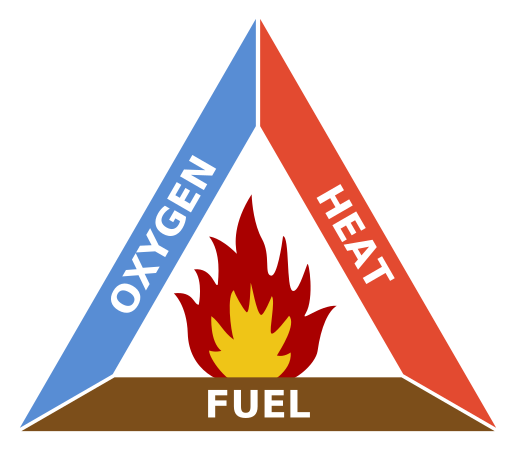The “Triangle of Combustion” illustrates the three elements required to create an ignition or explosion.
- Fuel: This can be in the form of a gas, vapour, mist or dust
- Oxygen: Approximately 21% by volume in normal air.
- Source of Ignition: This can be ab arc, spark, naked flame, hot surface or other sources of energy.

Combustion will take place if all three elements are present with gas/air mixture within certain limits and the sources of ignition having sufficient energy. After ignition, if the combustion is self-sustaining, the mixture is describes as an “explosive atmosphere”.
Techniques used in explosion protected equipment to prevent or control combustion are:
- Removal of any one or more element, e.g. isolation or separation of the source of ignition from gas/mixture
- Allow the three elements to co-exist and ensure that the energy of the source of ignition is maintained below specific values
- Allow an explosion to take place and contain I within a robust enclosure.
These techniques are addressed in the various sections of this manual as:
Ex ‘d’, Ex ‘e’, Ex ‘i’, Ex ‘m’, Ex ‘n’, Ex ‘o’, Ex ‘p’, Ex ‘q’ & Ex ‘s’.




